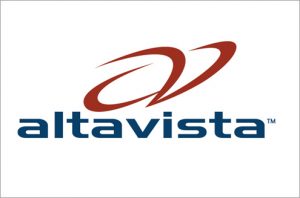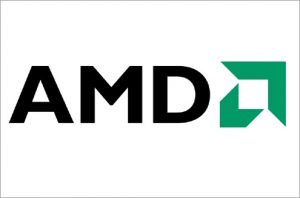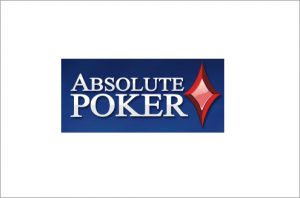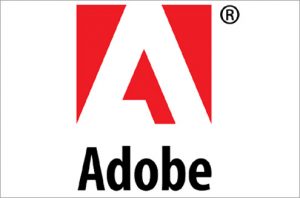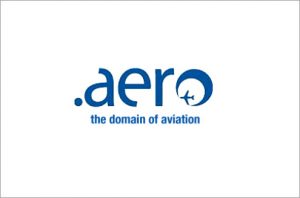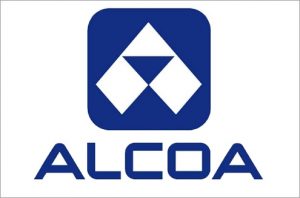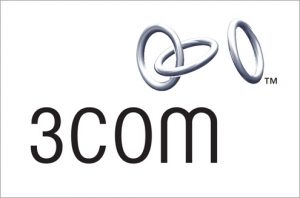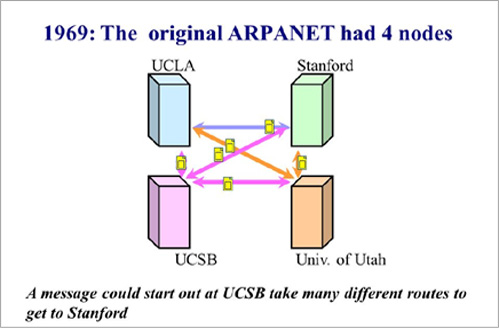Allied Signal – allied.com was registered
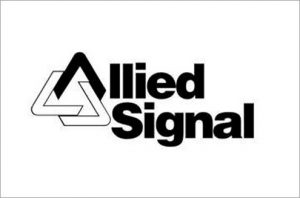
Date: 09/03/1987
AlliedSignal was an American aerospace, automotive and engineering company created through the 1985 merger of Allied Corp. and Signal Companies. It subsequently purchased Honeywell for $15 billion in 1999, and thereafter adopted the Honeywell name and identity.
Company History:
AlliedSignal Inc., formed from the acquisition of Signal Companies, Inc. by Allied Corporation on August 6, 1985, is one of the largest industrial corporations in the world. The company provides a wide range of products for many industries, including aerospace and automotive parts, chemicals, fibers, plastics, and advanced materials. AlliedSignal has its roots in the chemical industry and has had experiences from its earliest days in acquiring and holding subsidiaries. It may be said that Allied-Signal, formerly Allied, was born large and has been gaining ground ever since.
Five Companies Merged to Form Allied in 1920
The outbreak of World War I convinced several executives in the fledgling American chemical industry that the United States should contest the German lead in this field. Among them were Dr. William H. Nichols, a respected chemist and president of General Chemical Company; Eugene Meyer, a publisher and financier; and Meyer’s protégé, Orlando F. Weber. Meyer’s efforts bore fruit on December 17, 1920, with the formation of the Allied Chemical & Dye Corporation, a merger of five companies which among them provided the new company with four basic ingredients of the chemical industry of the day: acids, alkalies, coal tar, and nitrogen. The acids were furnished by General Chemical, founded in 1899, whose president, Dr. Nichols, became Allied’s first chairman. The alkalies were contributed by the Solvay Process Company, founded in 1881, and, like General Chemical, the leading American company in its field at the time of the creation of Allied. The Barrett Company, founded in 1858, was by 1920 the largest manufacturer of coal tar products in the United States, while Semet-Solvay, founded in 1895, was a builder and operator of coke ovens, a byproduct of which is coal tar. The National Aniline & Chemical Company, founded in 1917, at first merely supplied aniline oil, a substance used in making dyes, but its head, Orlando F. Weber, became Nichols’s successor and moved the new company into the production of nitrogen.
Although it was Eugene Meyer’s financial genius that had created Allied, it was Weber’s personality and management style that influenced Allied’s methods of doing business for generations to come, for good and for ill. Orlando Franklin Weber was born on October 6, 1878, in Grafton, Wisconsin. His father was a secretary of the Federated Trades Council in Milwaukee and a socialist labor leader. The younger Weber, however, was drawn to private enterprise. He first opened a bicycle shop and then went into the automobile business, starting an agency in Chicago for the Pope-Toledo car in 1902. From Chicago he moved to Detroit and then to New York where he came to the attention of Meyer. Meyer put Weber in charge of the 1915 reorganization of Maxwell, an early automobile company whose name was to linger in the public mind long after the company folded, thanks to the jokes of Jack Benny. Weber followed Meyer into the War Finance Corporation during World War I and, as a result, became interested in the chemical industry. Since Weber’s National Aniline had come through the war in the best financial shape of the five companies that formed Allied, it was only natural that Meyer should turn to his young associate to run the new chemical company.
Weber, first as president then as chairman, appropriated funds for a large plant to be built at Hopewell, Virginia, to fix nitrogen from the air for the production of synthetic ammonia. Ammonia could be turned into nitric acid which, when combined with the soda ash made by the Solvay component of Allied, produces sodium nitrate, a substance with an agricultural use as fertilizer and a military use as an ingredient in explosives. By the end of the 1920s Allied was doing a thriving business making and selling basic chemicals to the rest of American industry.
Important as this achievement was, it was on the financial aspect of running the company that Orlando Weber’s personality left its most enduring mark. Weber was a mathematical genius who had a grasp of the most complicated and detailed economic theories and who could, when called upon, discuss them by the hour with no notes. He was also highly secretive, keeping vital information about the company locked up in his personal safe and sharing this information with as few people in company management as possible. He was regarded by many of those that knew him as an autocrat who refused to spend any more of his company’s money than absolutely necessary.
The beneficial consequences of this unusual collection of personality traits was that, since Weber was a strong believer in a large reserve of liquid assets, Allied was able to survive the Great Depression relatively unscathed. From 1921 through 1939 Allied had no funded debt, never borrowed from banks, and paid a dividend every year, including 1932, the worst year of the Depression. The harmful consequences of Weber’s eccentric personality were, first of all, a refusal by Allied to engage in basic research leading to new products. Weber justified this decision by maintaining that he did not want to compete with the companies that were Allied’s customers. This policy, however, left Allied with a shrinking share of the market after World War II when new chemical products were introduced. Secondly, Weber’s penchant for secrecy got him into trouble with his stockholders, to whom he refused to issue detailed reports, and eventually with the Securities and Exchange Commission which, in 1934, charged him with failing to provide enough information to allow government agencies to determine whether Allied was making or losing money. Weber justified his reticence by claiming that he needed to protect company secrets. Nevertheless, this secrecy, combined with his autocracy, resulted in the fact that the highest executives in the company were not conversant with the overall operation of the company when he retired in 1935. This gap in expertise was to plague Allied for the next 30 years.
Weber’s autocracy took many forms, some petty and others significant. During his tenure, and for several years thereafter, Allied executives were forbidden to have their pictures taken for the media, forbidden to allow their biographies to appear in Who’s Who in America, and forbidden to take part in meetings of trade associations. More significantly, lateral communication between executives within the company was made cumbersome. If, for example, the plant manager for ammonia wished to speak with the plant manager for soda ash, then each manager had to ask permission from their respective vice-presidents in order for the conversation to take place. The vice-presidents, in turn, would have to ask Weber. Weber himself could make this system work because he was the original guiding spirit of the company and consequently knew where each piece of the mosaic of company operations fit. When he left, however, Allied’s corporate bureaucracy remained in place without anyone of Weber’s talents to organize all the pieces.
Post-Weber Years Were Ones of Decline
Weber himself was the cause of this knowledge vacuum, as it were, at Allied. In order to keep Charles Nichols, son of the scholarly Dr. Nichols, and the Solvay family from taking control of the company, Weber put Allied in the hands of accountants. These accountants knew little of the chemical industry but were the next three chairmen of Allied: Henry Atherton, Fred Emmerich, and Glen B. Miller.
During their term of office, from 1935 to 1959, Allied made money–particularly during World War II–because basic chemicals were essential to the war effort, but its plants became obsolete. In 1935, under the chairmanship of Emmerich, Allied borrowed $200 million to modernize its plants. Emmerich found himself unable to update company policy, however, because division heads had acquired complete autonomy. No vice-president could make any decision without the concurrence of every other vice-president.
Glen B. Miller, Emmerich’s successor, created the jobs of research vice-president and marketing vice-president, positions that had not existed at Allied previously. The company continued to drift without any coherent company policy or long-term strategy, however, because of the advanced age of its management. Kirby H. Fisk, who had experience in insurance and finance, was put in charge in 1959 and arranged a merger with Union Texas Natural Gas in 1962. Fisk then died of a heart attack, and Allied’s board could not agree on a successor. A troika emerged: Chester M. Brown, who had a background in operations, became president and chief executive officer; Harry S. Ferguson, the accountants’ champion, became chief administrative officer and chairman of the executive committee; and Howard Marshall, head of Union Texas before the merger, continued to run the petroleum concern but now with a strong voice in Allied’s boardroom. Since there was no agreement as to who should be chairman of the board, the position was left vacant. Finally, Frederick Beebe, a member of Allied’s board representing the interests of Eugene Meyer (Weber’s mentor), set in motion the complicated legal machinery that reorganized the board of directors and brought in John T. Connor, a former Secretary of Commerce under Lyndon Johnson, to be president in 1967 and chairman of the board in 1969.
Recovery Began in Late 1960s
The accession of Connor marked the beginning of Allied’s recovery. Connor found that Allied showed earnings on paper during the terms of his predecessors by means of unorthodox accounting methods, all perfectly legal but masking the fact that Allied had slipped from first to sixth place in the American chemical industry. In the 12 years of his involvement with Allied, Connor improved the corporate staff by hiring his own people, appropriated larger expenditures for the company’s more profitable businesses, such as oil and gas, and moved the company away from its orientation on basic chemicals and toward intermediate and end products that utilize chemicals.
In May 1979 Edward L. Hennessy, Jr., arrived on the scene to further Allied’s recovery and turn it into Allied-Signal, a more dynamic and promising company than its predecessors. Whether by accident or design, Allied’s board chose as the new chairman of the board, president, and CEO a leader whose personality and abilities were similar to those traits of Orlando Weber’s that proved beneficial to the company. Like Weber, Hennessy was an expert at mathematics, careful with corporate assets, and decisive. Unlike Weber, however, Hennessy was direct and explicit rather than secretive (though at times somewhat brusque) and, more importantly, devoted to the research and development that Weber shunned.
After taking charge, Hennessy directed Allied to the forefront of scientific and technological advances, sometimes at the expense of the chemical business conducted by Allied at the time of its formation. In September 1979, for instance, Allied discontinued its operations in coke, coal, and paving materials, selling its paving materials business, its Detroit, Michigan, and Ashland, Kentucky, coke plants, and two coal mines. Hennessy followed the lead of Connor in this policy, who had sold off the Barrett Company in 1967. These moves were prudent, since more money could be made in other areas, but they so changed the nature of the company’s business that it became misleading to think of the modern Allied-Signal as primarily a chemical company.
Hennessy’s positive contributions were largely in the area of acquiring high-tech businesses: Eltra in 1979, Bendix in 1983 (as a result of that company’s ill-starred attempt to take over Martin Marietta), and Signal Companies, Inc., in 1985. Subsequently, Allied-Signal’s business was conducted in three segments: aerospace/electronics (later known as just aerospace), automotive, and engineered materials. In 1985 the aerospace/electronics segment accounted for 39 percent of Allied-Signal’s revenues, the automotive segment for 27 percent, and the engineered materials segment for 22 percent.
In 1985 Allied-Signal lost $279 million, the first loss in the company’s history. This loss was attributed by Hennessy to the establishment of The Henley Group, Inc., a company formed from all of Allied-Signal’s businesses outside the three business segments mentioned above, and to restructuring the bureaucracy of the company to a more modern configuration (all told, the company took $725 million in write-offs in 1985). In spite of this loss, sales in the aerospace/electronics segment rose 27 percent in 1985 and edged up one percent in the engineered materials segment. Sales in the automotive segment (components for brake systems, air and fuel filters, turbocharging equipment, and spark plugs) declined by four percent.
Hennessy remained Allied-Signal’s CEO until July 1991 (and was chairman until year-end 1991). Although he had streamlined the company considerably through numerous divestments, including the 1986 spinoff of Henley and the sale of 7 more subsidiaries in 1987 for a total of $1.8 billion, and had increased revenues to a peak of $12.34 billion in 1990, Hennessy did not&mdashcording to many observers–pay enough attention to the company’s profitability and allowed company debt to reach dangerously high levels. During the late 1980s and in 1990, Allied-Signal’s after-tax return on sales were only in the 3.7 to 4.4 percent range; in 1991 the company was hurt further by the recession and it posted a net loss of $273 million. Meanwhile, long-term debt as a percent of total capital ranged from 30.8 to 34.9 percent.
Bossidy Era (1992–) Brought Host of Transformations
Larry Bossidy, the person brought in to succeed Hennessy, moved boldly and ruthlessly to transform AlliedSignal in a few short years (the hyphen in the company name was dropped in 1993). Bossidy had spent 34 years at General Electric Co., moving to AlliedSignal after having ascended to the position of vice-chairman–number two to GE’s chairman, Jack F. Welch, Jr., a well-known slash-and-burn type manager.
Bossidy quickly initiated a housecleaning at AlliedSignal, most evident in the decline in the company workforce from 98,300 employees in 1991 to just 76,600 in 1996. Unprofitable business units were jettisoned; many of these were small, but a few were quite significant: the 1992 sale of the company’s remaining 39 percent stake in Union Texas Petroleum for $940 million in net proceeds; the April 1996 sale of its braking business to Robert Bosch GmbH for $1.5 billion; and the November 1997 sale of its safety restraints business to BREED Technologies, Inc. for $710 million in cash. Capital spending was slashed, and Bossidy worked to change the corporate culture into a less bureaucratic, more team-oriented one, with resulting annual increases in productivity of almost six percent. These and other streamlining moves resulted in an AlliedSignal that was more profitable–after-tax return on sales was 7.3 percent in 1996–and less burdened by debt, as long-term debt as a percent of total capital was cut to 22.2 percent by 1996.
Under Bossidy’s leadership, AlliedSignal also became much more selective with its acquisitions. Major acquisitions of note were limited to that of the $375 million purchase of the Lycoming Turbine Engine Division of Textron Inc. in 1994; the $245 million acquisition from Hoechst AG of a 95.8 percent interest in specialty chemicals manufacturer Riedel-de Haën AG in 1995; the estimated $400 million purchase of Prestone Products Corp., a maker of antifreeze and other auto-care products, in mid-1997; the June 1997 acquisition of Grimes Aerospace, a maker of aircraft lighting systems, from buyout firm Forstmann Little & Co.; and the October 1997 purchase of Astor Holdings Inc., a privately held maker of specialty waxes, adhesives, and sealants that fit well with AlliedSignal’s burgeoning specialty chemicals division. The increased acquisitions activity of 1997 seemed to indicate an attempt to leverage the company’s increasingly healthy state; in fact, the specialty chemical division alone set a goal in 1996 of doubling its $1 billion in annual revenue by 2000, with such acquisitions as Astor Holdings paving the way.
Continuous change continued to mark the Bossidy era as the company in October 1997 announced a restructuring whereby its three-sector structure was replaced by one consisting of the following 11 business units: Turbocharging Systems; Engines; Aerospace Equipment Systems; Electronics and Avionics Systems; Aerospace Marketing Sales & Service; Federal Manufacturing & Technologies; Automotive Products Group; Truck Brake Systems; Specialty Chemicals; Polymers; and Electronic Materials (the first six of these had comprised the Aerospace sector, the next two the Automotive sector, and the last three the Engineered Materials sector). This restructuring succeeded in eliminating a layer of management, and, in a press release, Bossidy said that each of the 11 business units “is a significant factor in its market and has global reach, world-class talent, and the critical mass to operate autonomously. Removing the sector layer will enable these businesses to make faster decisions and serve customers with greater speed, flexibility, and cost effectiveness.”
By the late 1990s, AlliedSignal–thanks largely to its bold leader–was the envy of much of the industrial world. The company’s great potential seemed to have finally been fulfilled. In the years to come, AlliedSignal was likely to continue to seek complementary acquisitions–increasingly outside the United States&mdash well as growing organically, in its quest to remain one of the top industrial corporations in the world.

